Opinion & Analysis
Three ways to hit longer drives

Those of you who have read my article “How Far Should You Hit Your Golf Clubs” may remember this success story:
“With a 2-degree change in driver loft and some minor adjustments made to his swing path, angle of attack, etc., one of my amateur students went from being an already above-average efficient driver at 2.61 yards/mph to an extremely efficient one at 2.75 yards/mph. So with no change to his 102 mph swing speed, he increased his driving distance average from 266 to 280. Then after some swing speed training, he got up to 112 mph and can now hit drives around 307 yards with that same efficiency of 2.75 yards/mph. That’s 41 more yards!”
Let’s talk about the three reasons this student was able to achieve the extra 41 yards, because they can help every golfer add distance to their drives.
No. 1: Solid Contact
Hitting the ball in the center of the clubface is an important component to hitting the ball farther (and straighter, too). In his article “Impact Location by Handicap,” fellow GolfWRX Featured Writer Tom Stickney II included some great photos of typical impact dispersions broken down by a range of handicaps.
According to research data from Trackman, the typical 14-to-15 handicapper has an average club head speed of 93.4 mph and hits drives that go about 214 yards. A typical PGA Tour player swings at about 113 mph and hit his drives about 290 yards. That means the average driving distance efficiency for an amateur is 2.29 yards/mph and a tour player gets about 2.57 yards/mph.
Interestingly, PGA Tour players aren’t even the most efficient players. Although they are good ball strikers, they tend to hit the ball too low and with too much spin for maximum driving distance efficiency. LPGA players, on the other hand, get about 2.64 yards/mph. That means that the average golfer gives up in the neighborhood of 35 yards to an LPGA player, despite both of them swinging the driver at approximately the same speed of 93-to-94 mph. Part of this comes down to making better contact as already mentioned, so definitely work on your ball striking.
A cheap and easy way to check your impact location is with Dr. Scholl’s X Foot Powder Spray. Spray it on the face of your clubs so you can quickly see your impact pattern. It wipes off easily and causes no damage to your clubs.
No. 2: Optimal Launch Conditions
In the example above, my student was already a very efficient driver at 2.61 yards/mph. He has aspirations of playing on the Senior Tour in a few years, though, so he flew me to Texas to see if we could eek a few more yards out of him.
We went over to his local range and started hitting balls on the local pro’s Trackman. After a few drives, we determined that he was averaging 102 mph of club head speed, had an 8.9-degree launch angle and was generating 3382 rpm of spin using his 9-degree driver. I felt that we could get more distance out of him without even increasing his club head speed. Ideally, I wanted to increase his launch angle to about 13.8 degrees and decrease his spin rate to around 2508 rpm.
The easiest way to change spin rate if you make consistent contact is to change head loft. Using a bit of algebra, I estimated that we could bring his spin down and accomplish the first goal if we went from his 9-degree driver down to a 6.7-degree driver. We went over to Sellinger’s Power Golf, which carries low-lofted drivers, and we asked for a driver that measured 6.7-degrees (it was actually stamped 6). The nice thing about Sellinger’s is that they carry a good selection of low-lofted drivers and they can often get you a specific head loft. Some top-tier custom club fitters such as Tom Wishon can do this as well.
With the lower-lofted driver, the student and I went back over to the range and started measuring his drives with the new head. His average spin came down to the desired range, so our first goal was complete. Next, we faced the second part of the challenge. He was already hitting the ball low with the 9-degree driver, but now with the 6.7-degree driver he was hitting it even lower. To get him to launch it higher, we had him tee the ball higher and position it slightly more forward in his stance. Due to the D-Plane, we also had him swing slightly more in-to-out. After some practice, we arrived at the precise teeing location and swing direction that we needed for him to swing freely and achieve our desired launch angle of close to 14 degrees.
From a simple 2.3-degree change in driver loft and some slight technical adjustments, we got him up from 266 yards per drive to 280 yards per drive, which is about the maximum amount of distance he could expect under normal average conditions from a club head speed of 103 mph.
Here are 5 steps for how to apply this to your own game.
- Find a Doppler Radar launch monitor such as FlightScope or Trackman in your area and get some basic averages for yourself for club head speed, launch angle and spin rate.
- Visit a club fitter who can find out the exact loft of your driver (remember, it’s not always what’s stamped on the head).
- Use the table below and some algebra to estimate the precise head loft you need to achieve your ideal spin rate. All else being equal, going up in loft will add spin. Going down in loft will take off spin.
- Get the precise driver loft that you need.
- Using a Trackman or other launch monitor, play with your tee height, ball position and swing direction until you achieve your goal launch angle from the next table below.
Teeing the ball higher, farther forward in your stance and swinging a bit more in-to-out can help you hit higher drives. Teeing up lower, farther back in your stance and swinging a little less in-to-out can help you bring the launch down.
No. 3: Faster Swing Speed
Once you are hitting the ball solid and have optimized your launch conditions as described above, you can gain additional distance through swing speed training programs such as mine, Swing Man Golf. That’s how my student added another 27 yards to his 280-yard drives, getting him up to an average of 307 yards per drive. With his excellent driving efficiency and now above average clubhead speed, this student won’t be losing anything to the field and he is well on his way to achieving his goal.
Have fun launching the ball farther!
- LIKE195
- LEGIT30
- WOW16
- LOL10
- IDHT4
- FLOP11
- OB4
- SHANK11
19th Hole
Vincenzi’s 2024 Wells Fargo Championship betting preview: Tommy Fleetwood ready to finally land maiden PGA Tour title

The PGA Tour season ramps back up this week for another “signature event,” as golf fans look forward to the year’s second major championship next week.
After two weaker-field events in the Zurich Classic and the CJ Cup Byron Nelson, most of the best players in the world will head to historic Quail Hollow for one of the best non-major tournaments of the year.
Last season, Wyndham Clark won the event by four shots.
Quail Hollow is a par-71 measuring 7,521 yards that features Bermudagrass greens. The tree-lined, parkland style course can play quite difficult and features one of the most difficult three-hole stretches in golf known as “The Green Mile,” which makes up holes 16-18: two mammoth par 4s and a 221-yard par 3. All three holes have an average score over par, and water is in play in each of the last five holes on the course.
The field is excellent this week with 68 golfers teeing it up without a cut. All of the golfers who’ve qualified are set to tee it up, with the exception of Scottie Scheffler, who is expecting the birth of his first child.
Past Winners at Quail Hollow
- 2023: Wyndham Clark (-19)
- 2022: Max Homa (-8)
- 2021: Rory McIlroy (-10)
- 2019: Max Homa (-15)
- 2018: Jason Day (-12)
- 2017: Justin Thomas (-8) (PGA Championship)
- 2016: James Hahn (-9)
- 2015: Rory McIlroy (-21)
Key Stats For Quail Hollow
Strokes Gained: Approach
Strokes gained: Approach will be extremely important this week as second shots at Quail Hollow can be very difficult.
Total SG: Approach Over Past 24 Rounds
- Akshay Bhatia (+1.16)
- Tom Hoge (+1.12)
- Corey Conners (+1.01)
- Shane Lowry (+0.93)
- Austin Eckroat (+0.82)
Strokes Gained: Off the Tee
Quail Hollow is a long course on which it is important to play from the fairway. Both distance and accuracy are important, as shorter tee shots will result in approach shots from 200 or more yards. With most of the holes heavily tree lined, errant drives will create some real trouble for the players.
Strokes Gained: Off the Tee Past 24 Rounds:
- Ludvig Aberg (+0.73)
- Rory McIlroy (+0.69)
- Xander Schauffele (+0.62)
- Viktor Hovland (+0.58)
- Chris Kirk (+0.52)
Proximity: 175-200
The 175-200 range is key at Quail Hollow. Players who can hit their long irons well will rise to the top of the leaderboard.
Proximity: 175-200+ over past 24 rounds:
- Cameron Young (28’2″)
- Akshay Bhatia (29’6″)
- Ludvig Aberg (+30’6″)
- Sam Burns (+30’6″)
- Collin Morikawa (+30’9″)
SG: Total on Tom Fazio Designs
Players who thrive on Tom Fazio designs get a bump for me at Quail Hollow this week.
SG: Total on Tom Fazio Designs over past 36 rounds:
- Patrick Cantlay (+2.10)
- Rory McIlroy (+1.95)
- Tommy Fleetwood (+1.68)
- Austin Eckroat (+1.60)
- Will Zalatoris (+1.57)
Strokes Gained: Putting (Bermudagrass)
Strokes Gained: Putting has historically graded out as the most important statistic at Quail Hollow. While it isn’t always predictable, I do want to have it in the model to bump up golfers who prefer to putt on Bermudagrass.
Strokes Gained: Putting (Bermudagrass) Over Past 24 Rounds:
- Taylor Moore (+0.82)
- Nick Dunlap (+.76)
- Wyndham Clark (+.69)
- Emiliano Grillo (+.64)
- Cam Davis (+.61)
Course History
This stat will incorporate players that have played well in the past at Quail Hollow.
Course History over past 36 rounds (per round):
- Rory McIlroy (+2.50)
- Justin Thomas (+1.96)
- Jason Day (+1.92)
- Rickie Fowler (+1.83)
- Viktor Hovland (+1.78)
Wells Fargo Championship Model Rankings
Below, I’ve compiled overall model rankings using a combination of the five key statistical categories previously discussed — SG: Approach (27%), SG: Off the Tee (23%), SG: Total on Fazio designs (12%), Proximity: 175-200 (12%), SG: Putting Bermuda grass (12%), and Course History (14%).
- Wyndham Clark
- Rory McIlroy
- Xander Schauffele
- Shane Lowry
- Hideki Matsuyama
- Viktor Hovland
- Cameron Young
- Austin Eckroat
- Byeong Hun An
- Justin Thomas
2024 Wells Fargo Championship Picks
Tommy Fleetwood +2500 (DraftKings)
I know many out there have Tommy fatigue when it comes to betting, which is completely understandable given his lack of ability to win on the PGA Tour thus far in his career. However, history has shown us that players with Fleetwood’s talent eventually break though, and I believe for Tommy, it’s just a matter of time.
Fleetwood has been excellent on Tom Fazio designs. Over his past 36 rounds, he ranks 3rd in the field in Strokes Gained: Total on Fazio tracks. He’s also been incredibly reliable off the tee this season. He’s gained strokes in the category in eight of his past nine starts, including at The Masters, the PLAYERS and the three “signature events” of the season. Tommy is a golfer built for tougher courses and can grind it out in difficult conditions.
Last year, Fleetwood was the first-round leader at this event, firing a Thursday 65. He finished the event in a tie for 5th place.
For those worried about Fleetwood’s disappointing start his last time out at Harbour Town, he’s bounced back nicely after plenty of poor outings this season. His T7 at the Valero Texas Open was after a MC and T35 in his prior two starts and his win at the Dubai Invitational came after a T47 at the Sentry.
I expect Tommy to bounce back this week and contend at Quail Hollow.
Justin Thomas +3000 (DraftKings)
It’s been a rough couple of years for Justin Thomas, but I don’t believe things are quite as bad as they seem for JT. He got caught in the bad side of the draw at Augusta for last month’s Masters and has gained strokes on approach in seven of his nine starts in 2024.
Thomas may have found something in his most recent start at the RBC Heritage. He finished T5 at a course that he isn’t the best fit for on paper. He also finally got the putter working and ranked 15th in Strokes Gained: Putting for the week.
The two-time PGA champion captured the first of his two major championships at Quail Hollow back in 2017, and some good vibes from the course may be enough to get JT out of his slump.
Thomas hasn’t won an event in just about two years. However, I still believe that will change soon as he’s been one of the most prolific winners throughout his PGA Tour career. Since 2015, he has 15 PGA Tour wins.
Course history is pretty sticky at Quail Hollow, with players who like the course playing well there on a regular basis. In addition to JT’s PGA Championship win in 2017, he went 4-1 at the 2022 Presidents Cup and finished T14 at the event last year despite being in poor form. Thomas can return as one of the top players on the PGA Tour with a win at a “signature event” this week.
Cameron Young +3500 (DraftKings)
For many golf bettors, it’s been frustrating backing Cam Young this season. His talent is undeniable, and one of the best and most consistent performers on the PGA Tour. He just hasn’t broken through with a victory yet. Quail Hollow has been a great place for elite players to get their first victory. Rory McIlroy, Anthony Kim, Rickie Fowler and Wyndham Clark all notched their first PGA Tour win at Quail.
Throughout Cam Young’s career, he has thrived at tougher courses with strong fields. This season, he finished T16 at Riviera and T9 at Augusta National, demonstrating his preference of a tough test. His ability to hit the ball long and straight off the tee make him an ideal fit for Quail Hollow, despite playing pretty poorly his first time out in 2023 (T59). Young should be comfortable playing in the region as he played his college golf at Wake Forest, which is about an hour’s drive from Quail Hollow.
The 26-year-old has played well at Tom Fazio designs in the past and ranks 8th in the field in Strokes Gained: Total on those courses in his last 36 rounds. Perhaps most importantly, this season, Young is the best player on the PGA Tour in terms of proximity from 175-200 in the fairway, which is where a plurality and many crucial shots will come from this week.
Young is an elite talent and Quail Hollow has been kind to players of his ilk who’ve yet to win on Tour.
Byeong Hun An +5000 (FanDuel)
Byeong Hun An missed some opportunities last weekend at the CJ Cup Byron Nelson. He finished T4 and played some outstanding golf, but a couple of missed short putts prevented him from getting to the winning score of -23. Despite not getting the win, it’s hard to view An’s performance as anything other than an overwhelming success. It was An’s fourth top-ten finish of the season.
Last week, An gained 6.5 strokes ball striking, which was 7th in the field. He also ranked 12th for Strokes Gained: Approach and 13th for Strokes Gained: Off the Tee. The South Korean has been hitting the ball so well from tee to green all season long and he now heads to a golf course that should reward his precision.
An’s driver and long irons are absolute weapons. At Quail Hollow, players will see plenty of approach shots from the 175-200 range as well as some from 200+. In his past 24 rounds, Ben ranks 3rd in the field in proximity from 175-200 and 12th in proximity from 200+. Playing in an event that will not end up being a “birdie” fest should help An, who can separate from the field with his strong tee to green play. The putter may not always cooperate but getting to -15 is much easier than getting to -23 for elite ball strikers who tend to struggle on the greens.
Winning a “signature event” feels like a tall task for An this week with so many elite players in the field. However, he’s finished T16 at the Genesis Invitational, T16 at The Masters and T8 at the Arnold Palmer Invitational. The 32-year-old’s game has improved drastically this season and I believe he’s ready to get the biggest win of his career.
- LIKE4
- LEGIT0
- WOW0
- LOL0
- IDHT0
- FLOP0
- OB0
- SHANK0
19th Hole
Vincenzi’s LIV Golf Singapore betting preview: Course specialist ready to thrive once again

After another strong showing in Australia, LIV Golf will head to Sentosa Golf Club in Singapore looking to build off of what was undoubtedly their best event to date.
Sentosa Golf Club sits on the southern tip of Singapore and is one of the most beautiful courses in the world. The course is more than just incredible scenically; it was also rated 55th in Golf Digest’s top-100 courses in 2022-2023 and has been consistently regarded as one of the best courses in Asia. Prior to being part of the LIV rotation, the course hosted the Singapore Open every year since 2005.
Sentosa Golf Club is a par 71 measuring 7,406 yards. The course will require precise ball striking and some length off the tee. It’s possible to go low due to the pristine conditions, but there are also plenty of hazards and difficult spots on the course that can bring double bogey into play in a hurry. The Bermudagrass greens are perfectly manicured, and the course has spent millions on the sub-air system to keep the greens rolling fast. I spoke to Asian Tour player, Travis Smyth, who described the greens as “the best [he’s] ever played.”
Davis Love III, who competed in a Singapore Open in 2019, also gushed over the condition of the golf course.
“I love the greens. They are fabulous,” the 21-time PGA Tour winner said.
Love III also spoke about other aspects of the golf course.
“The greens are great; the fairways are perfect. It is a wonderful course, and it’s tricky off the tee.”
“It’s a long golf course, and you get some long iron shots. It takes somebody hitting it great to hit every green even though they are big.”
As Love III said, the course can be difficult off the tee due to the length of the course and the trouble looming around every corner. It will take a terrific ball striking week to win at Sentosa Golf Club.
In his pre-tournament press conference last season, Phil Mickelson echoed many of the same sentiments.
“To play Sentosa effectively, you’re going to have a lot of shots from 160 to 210, a lot of full 6-, 7-, 8-iron shots, and you need to hit those really well and you need to drive the ball well.”
Golfers who excel from tee to green and can dial in their longer irons will have a massive advantage this week.
Stat Leaders at LIV Golf Adelaide:
Fairways Hit
1.) Louis Oosthuizen
2.) Anirban Lahiri
3.) Jon Rahm
4.) Brendan Steele
5.) Cameron Tringale
Greens in Regulation
1.) Brooks Koepka
2.) Brendan Steele
3.) Dean Burmester
4.) Cameron Tringale
5.) Anirban Lahiri
Birdies Made
1.) Brendan Steele
2.) Dean Burmester
3.) Thomas Pieters
4.) Patrick Reed
5.) Carlos Ortiz
LIV Golf Individual Standings:
1.) Joaquin Niemann
2.) Jon Rahm
3.) Dean Burmester
4.) Louis Oosthuizen
5.) Abraham Ancer
LIV Golf Team Standings:
1.) Crushers
2.) Legion XIII
3.) Torque
4.) Stinger GC
5.) Ripper GC
LIV Golf Singapore Picks
Sergio Garcia +3000 (DraftKings)
Sergio Garcia is no stranger to Sentosa Golf Club. The Spaniard won the Singapore Open in 2018 by five strokes and lost in a playoff at LIV Singapore last year to scorching hot Talor Gooch. Looking at the course setup, it’s no surprise that a player like Sergio has played incredible golf here. He’s long off the tee and is one of the better long iron players in the world when he’s in form. Garcia is also statistically a much better putter on Bermudagrass than he is on other putting surfaces. He’s putt extremely well on Sentosa’s incredibly pure green complexes.
This season, Garcia has two runner-up finishes, both of them being playoff losses. Both El Camaleon and Doral are courses he’s had success at in his career. The Spaniard is a player who plays well at his tracks, and Sentosa is one of them. I believe Sergio will get himself in the mix this week. Hopefully the third time is a charm in Singapore.
Paul Casey +3300 (FanDuel)
Paul Casey is in the midst of one of his best seasons in the five years or so. The results recently have been up and down, but he’s shown that when he’s on a golf course that suits his game, he’s amongst the contenders.
This season, Casey has finishes of T5 (LIV Las Vegas), T2 (LIV Hong Kong), and a 6th at the Singapore Classic on the DP World Tour. At his best, the Englishman is one of the best long iron players in the world, which makes him a strong fit for Sentosa. Despite being in poor form last season, he was able to fire a Sunday 63, which shows he can low here at the course.
It’s been three years since Casey has won a tournament (Omega Dubai Desert Classic in 2021), but he’s been one of the top players on LIV this season and I think he can get it done at some point this season.
Mito Pereira +5000 (Bet365)
Since Mito Pereira’s unfortunate demise at the 2022 PGA Championship, he’s been extremely inconsistent. However, over the past few months, the Chilean has played well on the International Series as well as his most recent LIV start. Mito finished 8th at LIV Adelaide, which was his best LIV finish this season.
Last year, Pereira finished 5th at LIV Singapore, shooting fantastic rounds of 67-66-66. It makes sense why Mito would like Sentosa, as preeminent ball strikers tend to rise to the challenge of the golf course. He’s a great long iron player who is long and straight off the tee.
Mito has some experience playing in Asia and is one of the most talented players on LIV who’s yet to get in the winner’s circle. I have questions about whether or not he can come through once in contention, but if he gets there, I’m happy to roll the dice.
Andy Ogletree +15000 (DraftKings)
Andy Ogletree is a player I expected to have a strong 2024 but struggled early in his first full season on LIV. After failing to crack the top-25 in any LIV event this year, the former U.S. Amateur champion finally figured things out, finished in a tie for 3rd at LIV Adelaide.
Ogletree should be incredible comfortable playing in Singapore. He won the International Series Qatar last year and finished T3 at the International Series Singapore. The 26-year-old was arguably the best player on the Asian Tour in 2023 and has been fantastic in the continent over the past 18 months.
If Ogletree has indeed found form, he looks to be an amazing value at triple-digit odds.
- LIKE3
- LEGIT3
- WOW1
- LOL2
- IDHT0
- FLOP2
- OB0
- SHANK0
Opinion & Analysis
Ryan: Lessons from the worst golf instructor in America
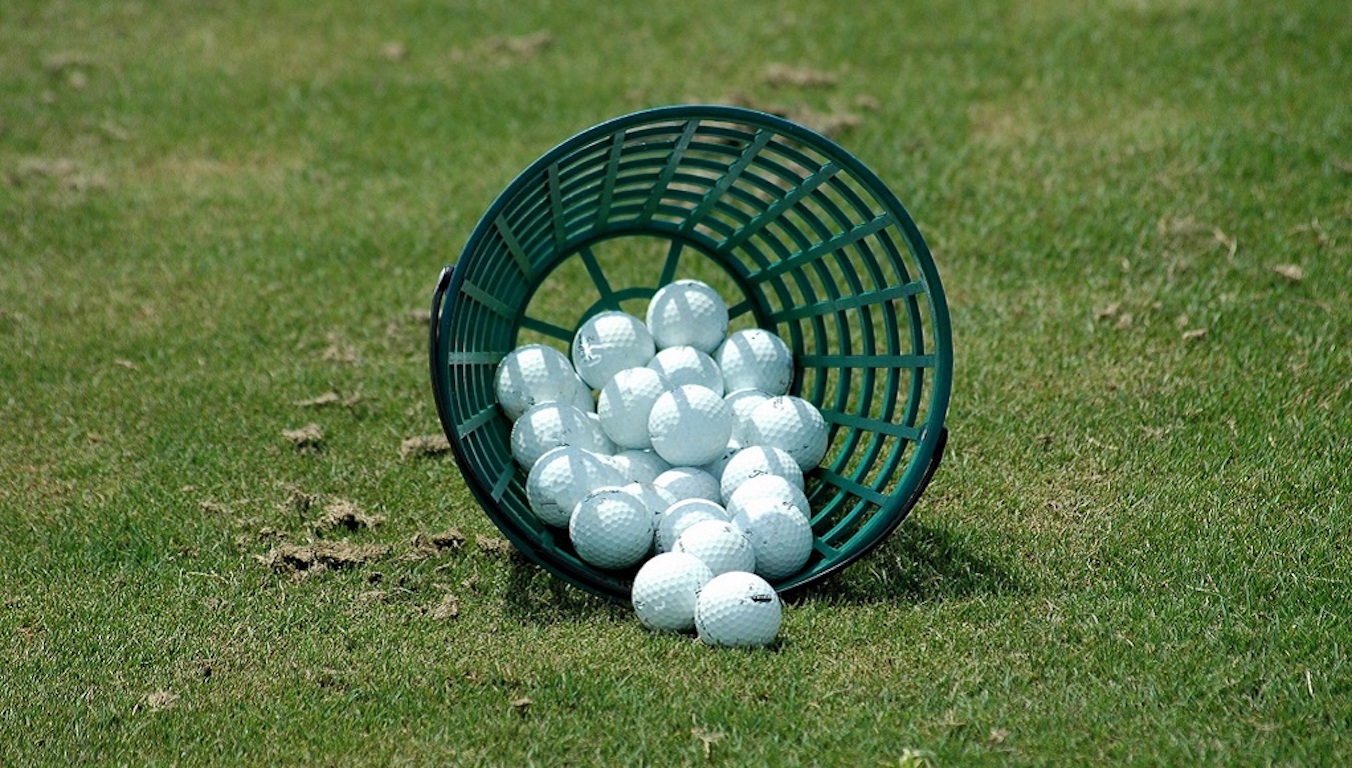
In Tampa, there is a golf course that boasts carts that do not work, a water range, and a group of players none of which have any chance to break 80. The course is overseen by a staff of crusty men who have succeeded at nothing in life but ending up at the worst-run course in America. However, this place is no failure. With several other local courses going out of business — and boasting outstanding greens — the place is booked full.
While I came for the great greens, I stayed to watch our resident instructor; a poor-tempered, method teacher who caters to the hopeless. At first, it was simply hilarious. However, after months of listening and watching, something clicked. I realized I had a front-row seat to the worst golf instructor in America.
Here are some of my key takeaways.
Method Teacher
It is widely accepted that there are three types of golf instructors: system teachers, non-system teachers, and method teachers. Method teachers prescribe the same antidote for each student based on a preamble which teachers can learn in a couple day certification.
Method teaching allows anyone to be certified. This process caters to the lowest caliber instructor, creating the illusion of competency. This empowers these underqualified instructors with the moniker of “certified” to prey on the innocent and uninformed.
The Cult of Stack and Jilt
The Stack and Tilt website proudly boasts, “A golfer swings his hands inward in the backswing as opposed to straight back to 1) create power, similar to a field goal kicker moving his leg in an arc and 2) to promote a swing that is in-to-out, which produces a draw (and eliminates a slice).”
Now, let me tell you something, there is this law of the universe which says “energy can either be created or destroyed,” so either these guys are defying physics or they have no idea what they are taking about. Further, the idea that the first move of the backswing determines impact is conjecture with a splash of utter fantasy.
These are the pontifications of a method — a set of prescriptions applied to everyone with the hope of some success through the placebo effect. It is one thing for a naive student to believe, for a golf instructor to drink and then dispel this Kool-Aid is malpractice.
Fooled by Randomness
In flipping a coin, or even a March Madness bet, there is a 50-50 chance of success. In golf, especially for new players, results are asymmetric. Simply put: Anything can happen. The problem is that when bad instructors work with high handicappers, each and every shot gets its own diagnosis and prescription. Soon the student is overwhelmed.
Now here’s the sinister thing: The overwhelming information is by design. In this case, the coach is not trying to make you better, they are trying to make you reliant on them for information. A quasi Stockholm syndrome of codependency.
Practice
One of the most important scientists of the 20th century was Ivan Pavlov. As you might recall, he found that animals, including humans, could be conditioned into biological responses. In golf, the idea of practice has made millions of hackers salivate that they are one lesson or practice session from “the secret.”
Sunk Cost
The idea for the worst golf instructor is to create control and dependency so that clients ignore the sunk cost of not getting better. Instead, they are held hostage by the idea that they are one lesson or tip away from unlocking their potential.
Cliches
Cliches have the effect of terminating thoughts. However, they are the weapon of choice for this instructor. Add some hyperbole and students actually get no information. As a result, these players couldn’t play golf. When they did, they had no real scheme. With no idea what they are doing, they would descend into a spiral of no idea what to do, bad results, lower confidence, and running back to the lesson tee from more cliches.
The fact is that poor instruction is about conditioning players to become reliant members of your cult. To take away autonomy. To use practice as a form of control. To sell more golf lessons not by making people better but through the guise that without the teacher, the student can never reach their full potential. All under the umbrella of being “certified” (in a 2-day course!) and a melee of cliches.
This of course is not just happening at my muni but is a systemic problem around the country and around the world, the consequences of which are giving people a great reason to stop playing golf. But hey, at least it’s selling a lot of golf balls…
- LIKE18
- LEGIT2
- WOW0
- LOL4
- IDHT1
- FLOP4
- OB1
- SHANK24
-

 19th Hole2 weeks ago
19th Hole2 weeks agoJustin Thomas on the equipment choice of Scottie Scheffler that he thinks is ‘weird’
-

 19th Hole2 weeks ago
19th Hole2 weeks ago‘Absolutely crazy’ – Major champ lays into Patrick Cantlay over his decision on final hole of RBC Heritage
-

 19th Hole3 weeks ago
19th Hole3 weeks agoReport: LIV Golf identifies latest star name they hope to sign to breakaway tour
-

 19th Hole3 weeks ago
19th Hole3 weeks agoBrandel Chamblee has ‘no doubt’ who started the McIlroy/LIV rumor and why
-

 19th Hole1 week ago
19th Hole1 week agoLET pro gives detailed financial breakdown of first week on tour…and the net result may shock you
-

 Equipment3 weeks ago
Equipment3 weeks agoJason Day on his recent switch into Srixon ZX5 and ZX7 Mk II irons
-
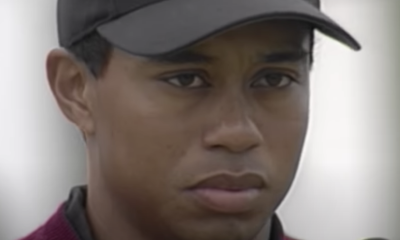
 19th Hole5 days ago
19th Hole5 days agoGary Player claims this is what ‘completely ruined’ Tiger Woods’ career
-
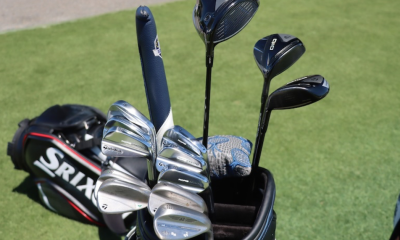
 Whats in the Bag1 week ago
Whats in the Bag1 week agoTeam McIlowry (Rory McIlroy, Shane Lowry) winning WITBs: 2024 Zurich Classic









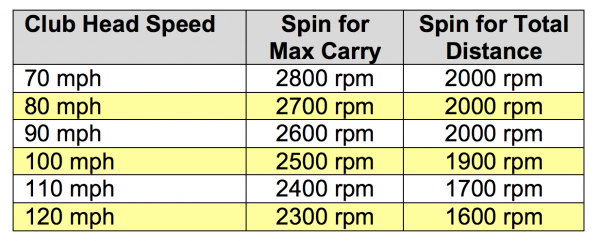
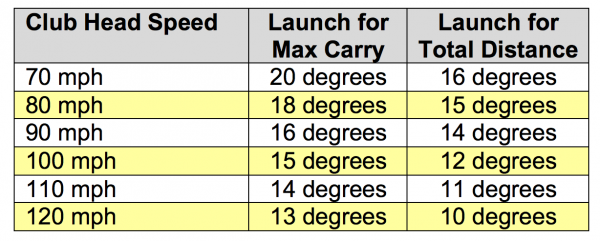










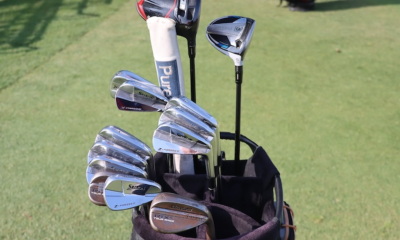

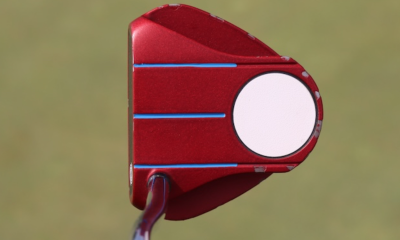

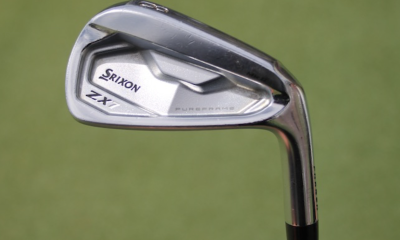



Pingback: How Much Distance is Lost With Age? - Dan Hansen Golf Instruction
Bob Gom
Jan 5, 2015 at 11:52 am
Some great stuff….would love to hear your thoughts on the pic of the two lowest handicaps.
Notice (mainly on the zero cap) how the marks go from lower on the face (heel) to the center to higher (toe)
One can pretty much draw a line at 45 degrees (approximate) threw the center of the ball marks from heel to toe.
This head is a TM SLDR it seems and like many of the past TM offerings, I feel are to up right in lie angle. Does this example not prove this?
It’s obvious that the person who used this club strikes it very well, but as he misses slightly towards the toe, the shots climb up the face and the opposite when they strike it off the heel. Looks to be two face lines (grooves) different in height or about 1/2″ difference. If the head was flatter, you might see one groove difference between all these shots and on a straighter line horizontally and I bet slightly better numbers.
I hear and read about Toe Droop, but to me this is a clear case of a lie being to upright…thoughts?
other paul
Jan 3, 2015 at 11:09 am
I decided to buy into Jaacob’s swing speed program. And then tried to hard and hurt my left shoulder. Oops. But I gained yards after doing the exercises one time (6yardd past my previous record, measured on the same launch monitor, old record was 280, beat it 4 times up to 286). Going to take a week off golf to let my shoulder repair, then back at it again. I like the program so far.
TR1PTIK
Dec 29, 2014 at 7:30 am
No doubt from reading this that ball contact and spin rates are keeping me from hitting the ball farther. The few times that I’ve been able to get in front of a launch monitor I was launching on average between 13-15 degrees with somewhere around 105mph club head speed. My spin rates are usually somewhere in the upper 2000-lower 3000 RPM range which I would expect is largely due to gear effect. According to the Zepp Golf sensor I’ve been toying with I can now swing the club somewhere around 110mph quite comfortably – though I’m not sure I trust that number – and some of my longest drives would indicate that I’m very capable of breaking the 300yrd barrier with some regularity if I can strike it more consistently. My longest drive last season was 324 yards that I tracked using the GolfShot app on my phone. I had at least one other tracked drive over 300 yards and several that were just under, plus a few more that weren’t tracked, but were at least very close to the 300 yard mark. Looks like some Dr. Scholl’s foot spray and range time are in my immediate future.
other paul
Dec 28, 2014 at 10:03 pm
I would love to see some more articles on over speed and long drive training. I swing just over 100mph and would love another 10-15mph. I jumped in a hot tub recently and then hit balls. I was hitting it over 300 yards immediately. I got a taste of effortless power and I want more.
alan
Dec 28, 2014 at 8:31 pm
i did a couple weeks of overspeed training after reading a thread here and picked up substantial gains. really surprised it isnt talked about more often.
caution-i wouldnt recommend overspeed training to a high capper, there are other things(center face contact) that imo a higher capper should worry about.
DaveMac
Dec 28, 2014 at 8:07 pm
Thanks for the article, I liked the launch conditions vs swing speed tables. I have to say the solution to get your student into his optimum launch window, seemed extreme. It required a dangerously low driver loft ( I can’t see many amateurs hitting a 6.7 degree driver straight, unless straight OB counts). It also required a complete change in driver setup and AoA.
There must be a more straight forward way of hitting the magic numbers!
DaveMac
Dec 28, 2014 at 8:17 pm
A different solution (at lower club head speed) by Howard Jones
http://www.golfwrx.com/forums/topic/1106731-angle-of-attack-or-launch-angle-is-that-important-on-a-driver/#entry10524341
Knobbywood
Jan 2, 2015 at 2:19 pm
First of all the student was trying for the champions tour so he is no average amateur… Secondly the change in ball position changes the AOA immediately so not a massive change like changing AOA with the same ball position… But anyway great job coming on wrx and publicly bashing and disagreeing with somebody who obviously has invested considerable time and effort into understanding these things and is also taking time out of their lives to enlighten simpletons such as yourself
The dude
Dec 28, 2014 at 3:43 pm
Speed training…..most under appreciated technique for hitting the ball longer…period